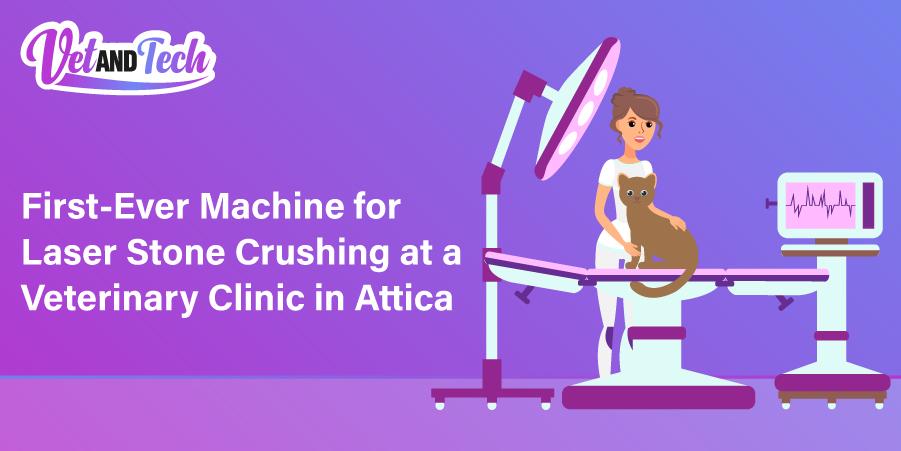First-Ever Machine for Laser Stone Crushing at a Veterinary Clinic in Attica
Kidney Stone! These words send chills down the spine of many people who have gone through the pain of passing them. Some stones are too big to pass on naturally through the urethra. They require surgery for safe removal. The Laser Stone Crushing technique has been in use for treating humans for a long time. However, this is the first time that the same technique will be used to treat animals in Attica.
In pets like dogs and cats, stones are a common occurrence. They can cause a lot of pain and lead to pyelonephritis and chronic kidney disease. Painful urination and blood in urine can be the signs of the presence of kidney stones. In some cases, there might not be any symptoms at all. Smaller stones can cause urinary tract obstruction by getting stuck in the urinary tract. This leads to the inability to urinate. Such a condition can cause hyperkalemia, sepsis, and acute kidney failure, which can be fatal. Stones can be of many types, including struvite, calcium oxalate, urate, cystine, calcium phosphate, and silicate. The most common of them are struvite and calcium oxalate stones.
Lasers have been in use in medical science for a long time. Laser machines treat or remove tissues and stones using precisely focused light. They are ideal for reducing blood loss and offer a lower chance of getting a wound infection compared to surgery. They provide more comfort and make the patient less anxious before the procedure. Laser treatment can guarantee better-wound healing and fewer scars. It does not pose serious risks because of its non-ionizing radiation, unlike other procedures such as x-rays and ultrasounds. There are indeed some risks associated with laser surgery like incomplete treatment, change in skin color, etc. However, its overall performance is remarkable.
In Attica, a laser machine has been introduced at a veterinary clinic for the removal of kidney stones in animals. The laser machine is very efficient at breaking and dissolving the stones completely. It is a remarkable step in veterinary medicine. This technique, even though invasive, is painless.
The procedure involves the following steps:
1. At first, a cystoscope is inserted into the urethra of the animal. This cystoscope can be flexible or rigid.
2. The surgeon aims at the stone and dissolves it using the laser.
The time taken during the surgery depends upon the size of the stone. It takes longer to break and dissolve bigger stones. The bigger the stone, the longer it will take. Since this operation is not surgery, the patient doesn’t need to take any antibiotics later on to recover. It is an efficient process without any hustle.
We are sure that this use of laser machines to break kidney stones will, from now on, spread everywhere. It is indeed the best option for pet owners to get an atraumatic stone removal surgery for their pets with reduced chances of infections.








